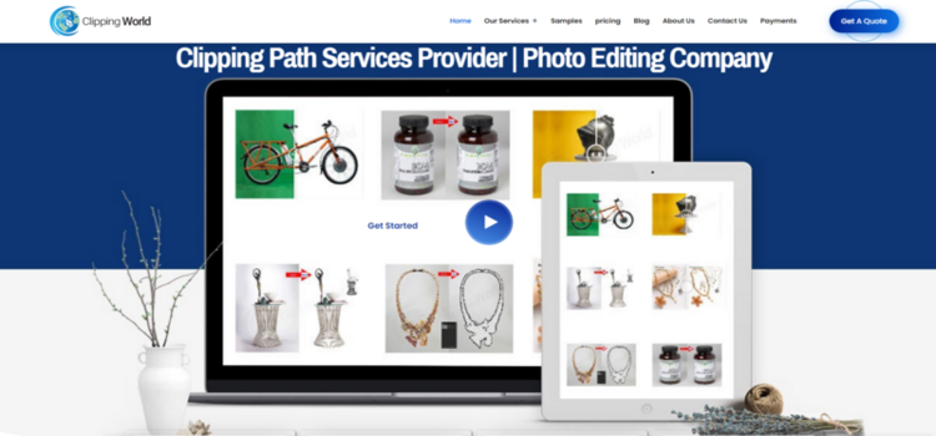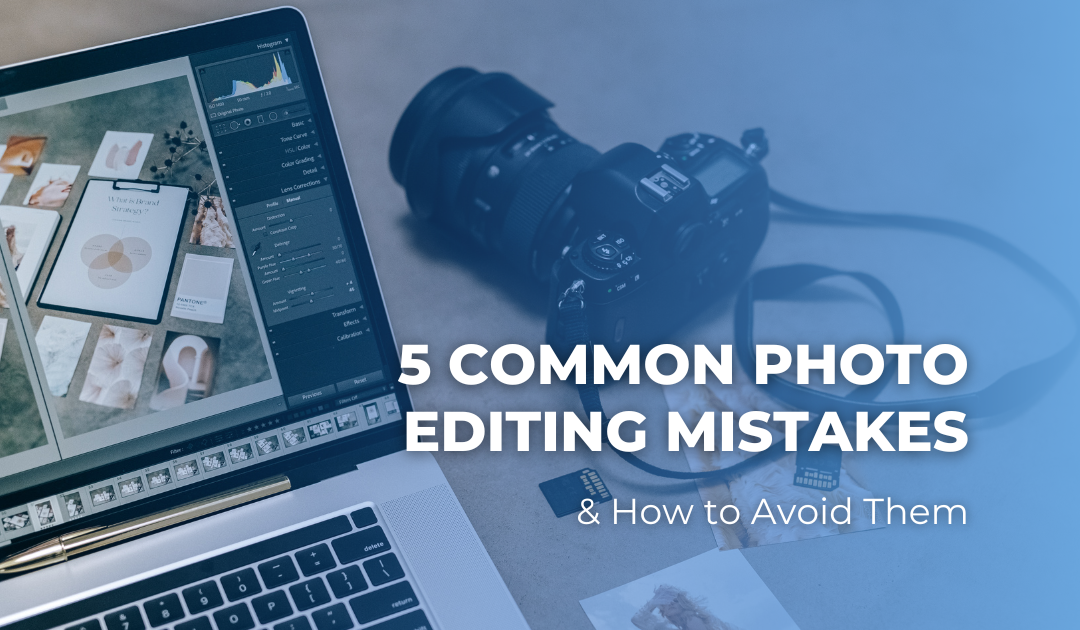Photo editing might seem difficult when you first start. All beginners and novices will make blunders, and even professionals may make mistakes while experimenting with new software. However, by understanding the most frequent errors, you may prevent them and become a master at transforming your photographs into clear, well-contrast images.
Again, each photograph tells its tale. Behind every portrait, landscape, product, fashion, nature, or other shot lies a photographer’s creative vision and aim. As a result, the goal of the image should be clear while altering it in the post-processing stage. This brings us to the significance of photo editing. Because of this, there are numerous clipping path services provider or photo editing services companies offer.
As a newbie, if you are concerned about the result of the post-processing stage, knowing the frequent photo editing errors you can avoid can help you achieve the appropriate image. So, read this article to learn about five of the most frequent picture editing blunders and how to improve your photo editing skills.
Five Mistakes that Everyone Should Avoid in Photo Editing
Photo editing is an art form. It requires years of experience and passion for creating eye-catching photos. Expert photo editors apply different photoshop photo editing services or techniques and develop impressive photos to catch the viewers’ attention. However, some common mistakes experienced, and newbies must avoid are getting the desired images. You should avoid the following issues to level up your photo editing career.
Colors Vary in Print than On Screen
Having a deep familiarity with color theory and the interplay between various hues is crucial. Splitting tones and editing shadows and highlights require knowledge of complementary photoshop colors adjustment and the ability to accurately calibrate your monitor to display those tones. If it isn’t, the printed version of the image might be too light or dark.
Adjusting your computer’s display settings or investing in hardware and software designed specifically for this purpose can help you achieve this. In contrast to the latter, which is an expense only professionals should bear, amateurs can benefit from experimenting with essential calibration.
Remember to Back Up the Original Image

Always backup your photos after transferring them from a memory card, whether on an extra hard drive or in the cloud. If your computer crashes, you will lose fewer photos this way. It is equally important to do so before launching your picture editor.
If you change an existing image and save it, you can’t undo it or start again if you’re displeased with the results. This is the case if you enlarge a picture and then discover that the customer has a different idea of how the final product should appear.
Exaggerating Sharpness
Sharpness is a universal quality of the most outstanding photos; its ability to capture viewers’ attention on their crispness and the clarity of their contrast, regardless of the subject. While the quality of the original capture is primarily responsible for an image’s level of sharpness, editing software can help improve its quality.
You can learn how to apply a high pass filter in your image editing program by creating a new layer, selecting this tool from the filters’ menu, outlining the region you want to sharpen, adjusting the opacity, and erasing the surrounding area. Remember that it’s pretty hard to point out a blurry photo, so be mindful of this and ensure your subjects are focused before you click the shutter.
Improper Cropping of the Photo

Cropping an image is more complicated than just reducing its size or a selected area. Thus, assuming that all it does is reduce the size of the original is a common mistake when editing photos. The success of your picture relies on how well you crop it for maximum attractiveness and interaction.
If you crop a picture too much, you risk losing essential details. Sometimes the narrative you were trying to tell with an image doesn’t make it in. Your topic may also seem unappealing if you crop the photo improperly.
Knowing the aspect ratio necessary for the medium you are altering your image for, such as print, e-commerce, a fashion portfolio, etc., is crucial for avoiding this photo editing blunder. Eliminate just the superfluous and bizarre details.
After cropping, the rule of thirds must apply to create visually appealing compositions. The power of thirds instructs photographers to frame their subjects in either the left or right third of a picture. While this allows creativity leeway, it is generally a safe bet.
Losing Details in a Photo
One of the worst things that may happen to your picture throughout the editing process is for you to lose important information. Image details refer to the level of granularity with which one can make out features such as individual hairs, water ripples, facial pores, and so on. The significance of getting every little detail in a frame is why most professional photographers would only shoot in RAW format. Of course, this allows creative leeway to picture editors as they work.
Editing would unavoidably remove some finer details, but it should maintain the spirit of your original vision. For instance, a product’s elements must be legible without being overexposed when the picture is being edited for a store or an online store to sell. When editing wildlife photographs, keeping fine details like hair or fur intact is preferable.
When Should You Stop Editing?
When your shot no longer seems authentic, you know you’ve gone too far with the filters. The use of extreme contrast, artificial colors, extreme highlights, or halos around the image’s borders are all fatal flaws. They will detract from the image’s aesthetic value and serve only to distract the viewer. Most current picture editing programs make use of artificial intelligence to improve productivity. Stay calm with these picture-altering tools, though. Remember that less is more to get the best results in picture editing.
Tips to Improve Your Skill
The expert photo editors from Clipping World recommend the following tips to help you improve your photo editing skill.
Get a Reliable Photo Editing Program

The potential of picture editing software is limitless. Consequently, you might want to try out several well-known editors such as Photoshop, Lightroom, Pixlr, GIMP, Luminar, Paintshop, and so on. Most editors have a freemium model, allowing you to quickly and easily try out many viable options before committing to one.
Less is More
You can utilize some picture editing tools available to you. Images should retain their natural beauty without seeming too boosted. Therefore, it’s alright to make minor adjustments periodically.
Always Have a Backup File
You should not alter the original copy of your images, as this might cause data corruption or a severe modification to the idea. Rather than risk damaging your original file while making changes, please save a copy to a cloud service like Google Drive, Ubackit, or Dropbox.
Create Shadow
Shadow makes a picture realistic. Try to create high-quality drop shadows services. This will increase your understanding and control over the tool of the image editing software and will make the picture more appealing.
Use an Appropriate Background
The background of a photo is a vital element. It can change the appearance of the subject. So, try to apply for a suitable location. In eCommerce photo editing, it is better to use a white background to high; light the product. Thus, you can focus entirely on the product, which impacts the sale.
Conclusion
Photo editing is a never-ending learning process. You will learn more as you will practice more. But avoiding the over-mentioned blunders can help you reach your goal. Also, you can hire a photo editing service provider if you run out of time. The photo editing agencies of Bangladesh can provide you with the required services at an affordable price.
FAQ
What is the importance of photo editing in a business?
Photo editing is needed for a business to reach its goals. It looks like a way to get more people to visit your website. Sales will be affected at some point.
What is E-Commerce photo editing?
Photos used for e-commerce need to be impressive and appealing. The photographer can’t give pictures that go together. Because of this, images have to be edited to make them perfect.
Do you need to edit product photos?
If you want your eCommerce business to move quickly, you need to use short photos. You can change your incomplete picture to make it look better.
 Author: Mark Williams is a writer based in New Jersey, USA. Creating blogs, whitepapers, and e-books is his primary focus. The majority of his free time is spent writing, reading, and watching baseball and basketball games.
Author: Mark Williams is a writer based in New Jersey, USA. Creating blogs, whitepapers, and e-books is his primary focus. The majority of his free time is spent writing, reading, and watching baseball and basketball games.


Recent Comments